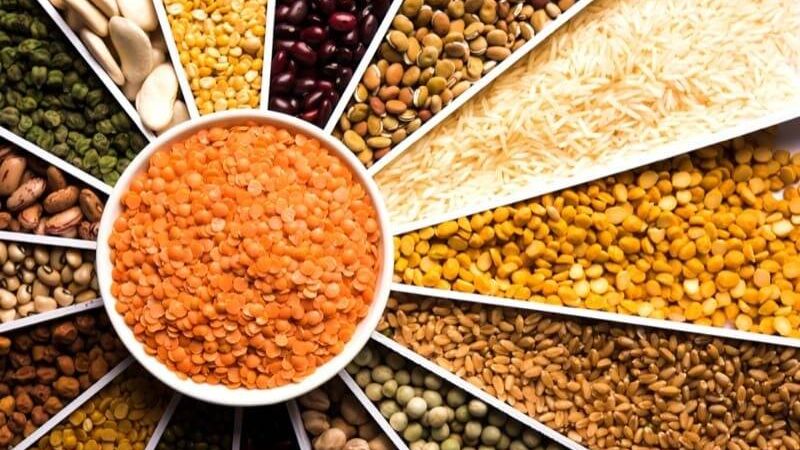

Our Review Process
Our articles undergo extensive medical review by board-certified practitioners to confirm that all factual inferences with respect to medical conditions, symptoms, treatments, and protocols are legitimate, canonical, and adhere to current guidelines and the latest discoveries. Read more.
Our Editorial Team
Shifa Fatima, MSc.
Author
Dr. Apoorva T, MHM.
MEDICAL ADVISOR
Is Resistant Starch Good for Diabetics
Several food categories and options exist in today’s times for people to choose from. Dietary options have become super vast and choices between keto, veganism, dairy-free, sugar free and many other such plans are now increasingly opted for. Whether it is to reduce weight or optimize glucose levels or maintain healthy cholesterol, these diets can serve various purposes. Generally, eating fewer foods with starch can help people in multiple ways. Starch is a carbohydrate-filled food that consists of a number of glucose units that are joined by bonds. Consuming certain starches can result in a breakdown of the enzymes to break down these bonds into glucose impacting our blood sugar levels. Some starches like the ones in potatoes are also high in their GI. This can cause their breakdown to be even faster resulting in a spike in their blood sugar levels.
Not all foods with starch work in the same way. Certain types are considered more diabetic-friendly than others. Resistant starches have a different type of molecular make that is helpful in the digestion of the food. These starches do not spike blood sugars. Studies, in fact, have shown the health benefits of foods with more resistant starch that also includes improved insulin sensitivity and higher satiety. Lets us read is resistant starch good for diabetics or not.Read why sugar free is good for health.
Table of Contents
What is Resistant Starch?
The type of starch that cannot be broken down by the digestive system, or, the starch that is resistant to digestion is called resistant starch. Other starches work in a manner where they get digested in the small intestine and then are broken down into sugar. Foods with resistant starch, however, pass through the small intestine unchanged. It ferments in the colon wherein the gut-friendly bacteria feed on it turning it into a classified form of fiber.
Resistant starches can be of 5 types:
- Type 1 – This is found in legumes, seeds, and whole grains. These cannot be digested as they are bound within cell walls
- Type 2 – These are found in unripe bananas, plantains, raw potatoes, lentils, etc. These are naturally occurring resistant starch.
- Type 3 – These are found and produced in foods that are cooked and then cooled before eating like potatoes and rice. These are also called retrograde starch
- Type 4 – This type is an artificial resistant starch that is created using chemical processes
- Type 5 - This is a starch that is classically manufactured upon heating and cooling certain starches that have fats. This changes its inherent structure and makes it resistant to digestion.
The same food can also have different types of resistant starch and this would depend on how the food is prepared. One of the major health benefits of this starch is that it promotes the good bacteria in the gut which helps to reduce the inflammation in the colon. It also helps to improve the overall digestive health.
Effect of Resistant Starch on Glucose and Insulin Sensitivity
Resistant Starch plays an important role in managing various metabolic conditions.
- Improves insulin sensitivity, reduces cholesterol levels, and reduces appetite.
- Increases the absorption of certain minerals that enhances your overall health.
- Several studies have confirmed the beneficial effect of resistant starch on insulin sensitivity.
- Overweight or obese individuals consuming 40 grams of resistant starch a day for 12 weeks can improve insulin sensitivity by 19%.
- Acetate formed from the fermentation of resistant starch in the colon due to the presence of bacteria suppresses the metabolism of fat tissues and reduces the concentration of free fatty acid in the system. Some of the other short-chain fatty acids are propionate and butyrate.
- Since the levels of Free fatty acids and the risk of insulin resistance are directly proportional, a person is at more risk of developing insulin resistance if there is an increase in free fatty acid levels in the body. Thus, by reducing the synthesis of free fatty acids, resistant starch helps in lowering insulin resistance and improving sensitivity.
Include Resistant Starch in your Diet
It is difficult to know the exact quantity of resistant starch you are taking in your diet, as there are no set guidelines about the daily intake of resistant starch and food labels do not specifically mention the amount of resistant starch in a food item. However, there are still ways in which you can add Resistant Starches into your diet.
- Type 2 Resistant Starch : Incorporate at least Two T-2 Resistant Starch foods in your diet like oats, unripe bananas, cashews.
- Retrogradation Process : Increase the amount of resistant starch by heating and cooling Type 3 Resistant Starch foods like Rice and Potatoes.
- Supplements : Add supplemental Resistant Starch into your diet by sprinkling Banana Flour and Potato Flour.
Bottomline
Resistant starch may help to control blood glucose levels and oxidative stress in people with type 2 diabetes. If you’re currently trying to break a weight loss plateau or have high blood sugars, including resistant starches in your diet is a good idea. Apart from being beneficial in optimizing your blood sugar levels and insulin resistance, resistant starches has several systemic and gastrointestinal advantages and is used to manage constipation, promote gut microflora, and reduce colon inflammation.
FAQs
What Does Resistant Starch Do?
A carbohydrate type, resistant starch ferments in the large intestine, feeding the beneficial gut bacteria. It even provides several health benefits and has fewer calories than regular starch. Generally, starch gets absorbed in the small intestine, but it is not the case with resistant starch.
Can You Eat Too Much Starch Resistant?
Excess of anything is harmful, and resistant starch is no different. Although it acts similar to fiber and is an essential part of many food items, consuming too much resistant starch can give rise to problems like bloating and gas.
Does Resistant Starch Increase Blood Sugar?
Resistant starch is recommended by many over regular starch because the former offers various metabolic health benefits. When consumed after meals, resistant starch can help reduce sugar levels. Multiple studies and researches have been conducted over the years that show resistant starch improves insulin sensitivity.
Is Resistant Starch Low Glycemic?
Food items containing a considerable amount of resistant starch are known to have a low glycemic index. Owing to the low glycemic index, foods with resistant starch like white bread, baked potatoes, rice, etc., result in a lower or smaller blood sugar spike. They even increase satiety, making sure you feel full for longer hours.
Does Resistant Starch Spike Insulin?
Several studies conducted by researchers and scholars have highlighted that resistant starch carries various metabolic health benefits. It can even improve insulin sensitivity to some extent. When taken after meals, resistant starch can lower insulin levels, not boost it.
Is Basmati rice a resistant starch?
The glycemic index of basmati rice is on the lower side as compared to other white rice. This is because basmati is known to have resistant starch that is resistant to digestion leading to no spikes in blood sugars.

References
- https://www.ncbi.nlm.nih.gov/pmc/articles/PMC5857355/
Disclaimer
This website's content is provided only for educational reasons and is not meant to be a replacement for professional medical advice. Due to individual differences, the reader should contact their physician to decide whether the material is applicable to their case.








